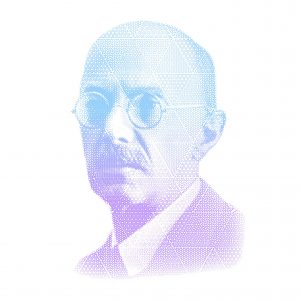Attention, expertise
and security
Attention, expertise
and security

Kálmán Kandó (10 July 1869 – 13 January 1931) was a Hungarian engineer, the inventor of phase converter and a pioneer in the
development of AC electric railway traction.
Kandó synchronous phase converter
Single-phase power was supplied at 16,000 volts and 50 Hz through a single overhead line and converted to three-phase on the locomotive by a rotary phase converter.[15] The drive motors, made by Metropolitan-Vickers, had a very large diameter of 3 meters and incorporated four sets of 24 magnetic poles each, which could be added to the traction effort at will, producing highly efficient constant speeds of 25, 50, 75 and 100 km/h over rail (or 17/34/51/68 km/h for the V60 heavy freight train engine variant, which had six pairs of smaller driving wheels). He created an electric machine called a synchronous phase converter, which was a single-phase synchronous motor and a three-phase synchronous generator with common stator and rotor.
It had two independent windings:
The outer winding is a single-phase synchronous motor. The motor takes the power from the overhead line.
The inner winding is a three-phase (or variable-phase) synchronous generator, which provides the power for the three- (or more) phase traction motors.
Kandó triangle drive
The propulsive force was transferred to the locomotive’s wheels using a traditional pushrod system, designed to provide manufacturing and maintenance commodity to the predominantly steam-based Hungarian Railways (MÁV) of the time. The so-called Kandó triangle arrangement [16] transferred power from the electric motor to the pushrods in such a way that no oblique forces were exerted on the chassis, making the V40 less hurtful to the rail track compared to steam engines. In practice the V40 pushrod system was too precise for steam-era habits based maintenance and required more frequent care.